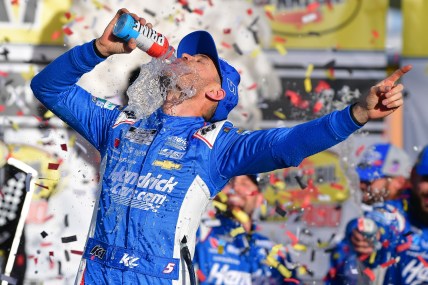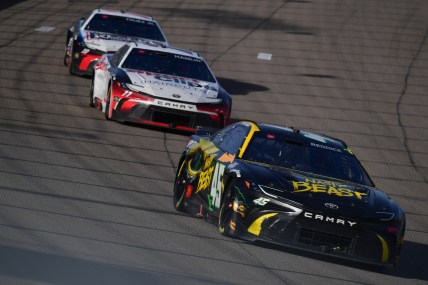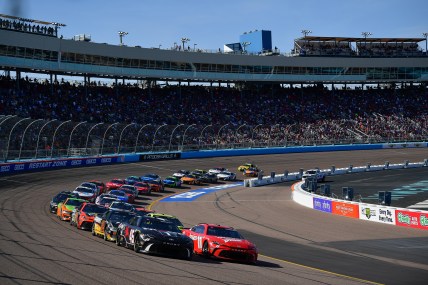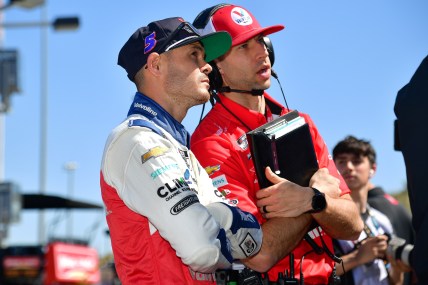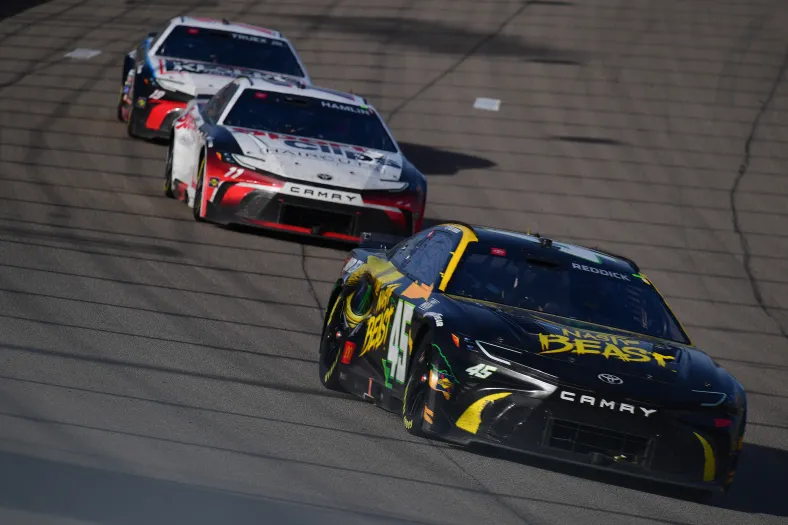
NASCAR is still stuck in the dirty air from its NA18D era.
For three years, The 550 Package used on intermediate tracks represented a bridge from the sixth generation to the seventh generation Cup Series cars but it never materialized quite the way NASCAR officials wanted and the racing product remains a work in progress everywhere because of it.
Ultimately, everything comes down to the fact that the NextGen car was designed to be the Indy Racing League on intermediates and Supercars on road courses with the manufacturer representation of IMSA. It’s a single source supplied drafting car that never got a chance to do what it was fully designed to do.
Pack race everywhere.

Drivers and teams collectively rallied against the 550 tapered, eight-inch spoiler configuration during a November 2021 test at Charlotte Motor Speedway, had a Come to Jesus Meeting with the series officials in Nashville during the Awards Week event in Nashville, and came back to Concord where they ultimately landed on the 670 tapered, four-inch spoiler package used over its first two seasons.
It’s turned out okay on intermediates, where there is a tremendous amount of parity and compelling competition but there are still races like Las Vegas earlier in the month where races are frustratingly won and lost by air blocking.
For the uninitiated, that is the practice of a leading driver simply driving with their eyes out the rear-view mirror, trapping a trailing driver in turbulent air and disrupting any momentum due to an aero push that prevents that car from turning.
That’s always been a part of motorsports but the NextGen era has certainly inherited some of the worst attributes of NA18D in that regard.
It’s worse on short tracks because they are generally flatter and are a single lane, which means a trailing car is forced to ride in the wake, and it’s nearly impossible to even execute a bump-and-run — the signature maneuver on short tracks.
The seventh generation Cup car is heavier, has wider tires, larger brakes and a tremendous amount of drag because it was designed with the intent of producing Daytona and Talladega style races on intermediate tracks. Atlanta Motor Speedway optimized itself with its 2022 reconfiguration just to reach that target.
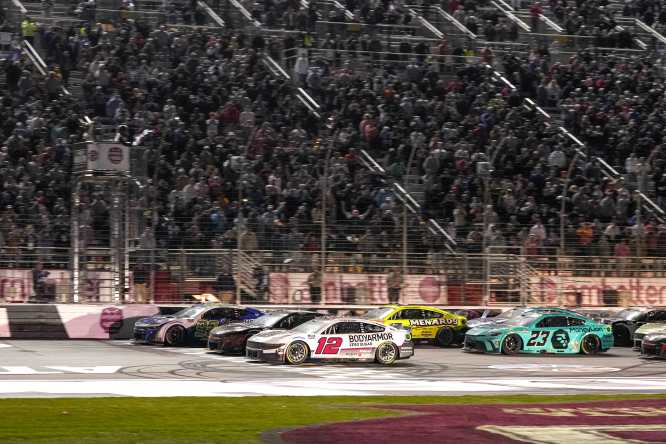
NASCAR recognizes it has a legitimate issue with its short track product. This is not how these tracks are supposed to race. A quick glance at a Xfinity Series or Super Late Model race is a better reflection of what this sub-discipline is supposed to look like.
… or just any Cup Series short track race prior to 2022.
As a result, NASCAR has made all sort of aerodynamic and downforce adjustments. Series officials have lowered the rear spoiler, simplified the rear diffuser and worked with Goodyear on producing a less forgiving tire all in the name of improving the on-track product, not only on short tracks, but also the road courses that share a similar attribute.
Any track that is inherently about out-braking, bump-and-runs or simply driving deeper into the corner than your opponent is under the pressure cooker right now and the race teams have proven to be generally aligned on the one thing that NASCAR is not willing to do.
Increase horsepower.
NASCAR has repeatedly said in some shape or fashion that a horsepower increase would come with a commensurate increase in the competition budget for teams at a time where the industry is working diligently to slash costs at every corner.
NASCAR managing director Brad Moran addressed the topic on Tuesday morning on SiriusXM NASCAR Radio.
“It’s been talked about, you know, more horsepower (and) smaller tires (which) equates to the same results, but in changing the (tapered spacer) and increasing the horsepower is relatively easy to do but we have to have all three manufacturer, obviously, on board,” Moran said.
“As soon as you do that, there is going to be reliability issues and that puts cost back into the engine and engine builder’s category, which they certainly will develop and start developing the engine.”
Two things there:
1) Narrower tires would go a long way towards producing a similar approach as more horsepower but the current spec parts suppliers are locked into their initial contracts through the end of this year. A new short track wheel design would need to be negotiated with BBS, or its contemporaries, but those conversations need to be happening right now if horsepower isn’t on the table. Objectively.
2) Drivers, owners and engine builders have universally pushed back on NASCAR’s cost and reliability argument, definitely for the 700-800 horsepower range, and even say a full unrestricted engine wouldn’t change the financial dynamic RIGHT NOW all too much.
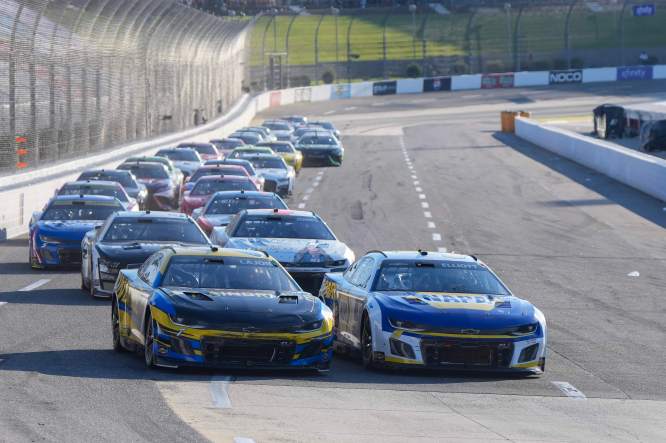
That’s because, regardless of what tapered spacer is placed on it, teams are buying the same engines they have bought for the past two-plus decades and they aren’t any cheaper than they were prior to 2015 when the gradual horsepower reduction started.
Enter Denny Hamlin, 20-year driving veteran, and now co-owner of 23XI Racing.
“We don’t need to prove it,” Hamlin said on Saturday at Phoenix of making the competition argument to NASCAR. “I’ve been in the sport for 20 years now. I’ve been a part of all of these tests where we’ve squeezed (horsepower) down, squeezed it down and every time we’ve squeezed it down, we would go in the building during the tests and say, that’s harder to pass – every time we’ve done that.”
The cost?
“The engine bills are the same, I’ve been saying this forever,” Hamlin said on his Actions Detrimental podcast on Monday. “The engine bills are the same now as they were when they were 900. We buy engines. We know.”
Durability?
“You just call up Doug Yates (at Ford) and TRD and say we are going to go back to our old 750 plate – it can be before next weekend, and they said it wouldn’t change any of our durability we have,” Hamlin said. “It can be done with one phone call with no additional money.”
You don’t like or trust Hamlin? How about fellow driver-owner Brad Keselowski of RFK Racing.
“These are the same engine architectures that made 900 horsepower 10 years ago,” Keselowski said on Saturday. “I think you could take a pretty significant bite of the apple, be it 50 to 100 horsepower with almost no cost.
“But if you wanted to go back to 900 horsepower, yeah, there would be some cost associated with that. I don’t think its significant though.”
Earnhardt Childress Racing Engines SVP Bob Fisher said in December that a marginal increase wouldn’t change anything from a reliability standpoint either.
“We want all the horsepower we can get,” Fisher said. “These engines are capable of producing well over 900 horsepower. To help the racing, if they wanted us to bump up the power levels to say 750 horsepower wouldn’t be a huge tear up for the engine companies. We already have a package where we used to run engines, multiple races with the seals on, and would feel quite comfortable doing that.
“I know NASCAR, uh, they don’t really want to talk about it. They haven’t asked much of the engine companies. When they have asked, we haven’t been against it by any stretch of the imagination. I will say, I think we could give these drivers more horsepower with an engine package that has already been validated to run more than one race at a 750-horsepower level.”
They don’t want to talk about it.
They don’t, Denny?
“I’ll tell you the same thing I told (NBC Sports reporter) Dustin Long, ‘call Jim France and ask,’ because I don’t know, I don’t have the answers for that,” Hamlin said.
Both Moran and COO Steve Phelps have cited the potential of new manufacturers too but Hamlin issued real concerns about making the racing product worse, right now and over the past two-plus years, over what may or may not come over the next three years.
We’re all looking at you, Honda.
“They are trying to get other manufacturers in here and do this or do that,” Hamlin said. “There is a bigger picture that I won’t understand, you won’t understand. No one will ever understand.
“We don’t need to sacrifice our actual product for trying to entice someone new. I think if you put on good racing people will want to come, no matter what. We are going to continue to beat this horse until it finally gets some movement, but I don’t know if it will happen just because for reasons that we will never understand and will never get explained.”
There is probably a cost to more horsepower, but there is a greater cost in sacrificing races at Martinsville, Richmond, North Wilkesboro, Gateway and New Hampshire. There is probably some merit to the likes of Honda wanting certain considerations made for whatever the next generation engine platform looks like.
It very well could be hybrid-electric.
But really, this comes back full circle to 2019-2021, and NASCAR liking what it saw from The 550 Package. It is obsessed with parity. It is obsessed with pack racing. It is obsessed with closer deltas. It’s ultimately the same sanctioning body, even under a different leader, that produced a tremendous low downforce race at Kentucky in 2015 only for Brian France of rebut that he wanted to see more drafting.
They have always wanted to see more drafting because it is obsessed with parity for reasons articulated by Kaulig Racing president Chris Rice on Wednesday on SiriusXM NASCAR.
“If we give them more horsepower the field is going to be spread out because the handling is going to be so much worse,” Rice said.
Talent will create a little bit of separation, even in an era defined by spec cars and its resulting parity, and NASCAR is 20 years into a war on performance.
Matt Kenseth wins a championship with one win and two races remaining
Chase for the ChampionshipJimmie Johnson wins six Chase for the Championships in a row
Elimination playoffLow downforce races produce a trio of top contenders called The Big Three
NA18DA hierarchy of teams established by driving talent and engineering smarts
A spec car
That’s not to say a pursuit of general parity is conceptually bad but when every driver has access to SMT data, and can match what the best driver is doing, that’s a spec driver driving a spec car, making it harder and harder to pass.
Like Rice said, horsepower should at least create a little separation between the best drivers, and isn’t that really what the whole industry is saying that it wants?
Matt Weaver is a Motorsports Insider for Sportsnaut. Follow him on Twitter.
